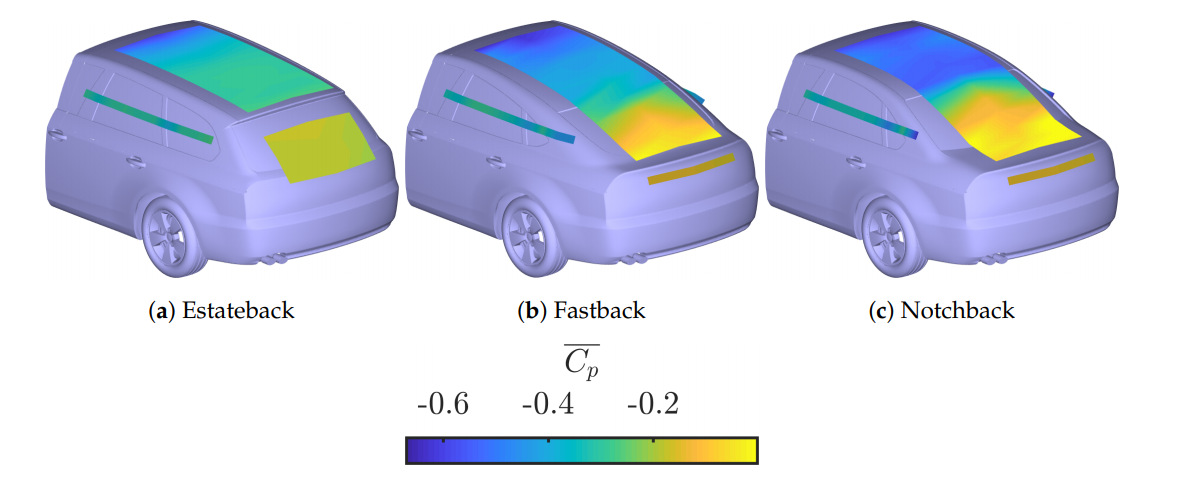 12-22-2020, 10:18 PM
12-22-2020, 10:18 PM
|
#37 (permalink)
|
|
Banned
Join Date: Nov 2017
Location: Australia
Posts: 2,060
Thanks: 107
Thanked 1,607 Times in 1,137 Posts
|
Quote:
Originally Posted by aerohead

Great! Thanks!
1) the lowest pressure is near the windshield header, yes? ( suction peak )
2) the closer to the windshield header, the lower the pressure, yes?
3) closely-spaced streamlines indicate high velocity, and consequently low static pressure, yes? ( Hucho, page-2 )
4) widely-spaced streamlines indicate low velocity, and consequently high static pressure, yes? ( deduced directly from Hucho, page-2 )
5) if separation occurs, the pressure of the attendant turbulence will take on that of the streamline directly above the turbulent boundary layer at the line of separation ( Bearman et al. )
----------------------------------------------------------------------------------
6) Porsche had every opportunity to make the roof 'full-length' ( like the Mirage ) but chose to cut it short.
7) The separation line, which might have been where the streamlines were more diverged at the very back, is now moved forwards, closer to the suction peak.
8) A void cannot support flow unless there is a perimeter framing the area to create a 'pool' of stagnant air which the active flow can skip over ( 1980 Mustang GT ).
9) Porsche has no such pool. It's separation line is closer to the lowest pressure on the car. All the turbulence created by chopping the roof is of low pressure, on 'top' of the remaining length of body below the void, defined by the absence of smoke.
10) that low pressure void is creating lift, whereas, the Mirage would have none of that kind. It's separation line occurs where the streamlines are furthest apart. Like the VW XL1. McLAREN Speedtail.
|
You seem to be implying that the pressures on the trailing edge of the roof will match the pressures found in the wake. That is not the case on modern cars; it may be the case on older cars with premature flow separation.
Current cars:

|
|
|

|